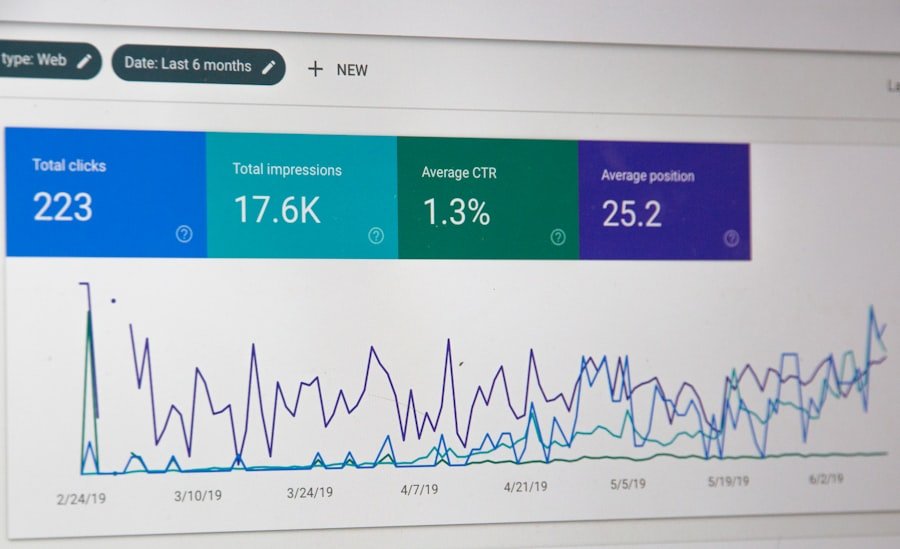In recent years, the landscape of fundraising has undergone a significant transformation, driven largely by advancements in technology. Among these innovations, artificial intelligence (AI) has emerged as a powerful tool that is reshaping how nonprofit organisations approach their fundraising strategies. AI-powered fundraising analytics refers to the application of machine learning algorithms and data analysis techniques to enhance the effectiveness of fundraising efforts.
This technology enables organisations to glean insights from vast amounts of data, allowing them to make informed decisions that can lead to increased donations and improved donor relationships. The integration of AI into fundraising analytics is not merely a trend; it represents a paradigm shift in how nonprofits can leverage data to optimise their operations. By harnessing the power of AI, organisations can analyse donor behaviour, predict future giving patterns, and tailor their outreach efforts to meet the specific needs and preferences of their supporters.
This article delves into the multifaceted role of AI in fundraising, exploring its benefits, challenges, and the future potential it holds for nonprofit organisations.
Summary
- AI-powered fundraising analytics uses advanced technology to analyse data and improve fundraising strategies for nonprofit organisations.
- Artificial intelligence plays a crucial role in identifying donor patterns, predicting donor behaviour, and personalising fundraising campaigns.
- Nonprofit organisations can benefit from AI-powered fundraising analytics by gaining insights into donor preferences, increasing donor retention, and improving fundraising efficiency.
- AI-powered fundraising analytics can significantly impact donor engagement by enabling personalised communication, targeted outreach, and improved donor stewardship.
- Implementing AI-powered fundraising analytics in nonprofit organisations requires investment in technology, staff training, and data security measures to ensure successful adoption and integration.
Understanding the Role of Artificial Intelligence in Fundraising
Artificial intelligence plays a pivotal role in transforming traditional fundraising methodologies into data-driven strategies. At its core, AI encompasses a range of technologies, including machine learning, natural language processing, and predictive analytics. These technologies enable nonprofits to process and analyse large datasets that would be unmanageable through manual methods.
For instance, machine learning algorithms can identify patterns in donor behaviour by analysing historical giving data, demographic information, and engagement metrics. This allows organisations to segment their donor base more effectively and tailor their communications accordingly. Moreover, AI can enhance the predictive capabilities of fundraising analytics.
By employing predictive modelling techniques, nonprofits can forecast future donation trends based on past behaviours and external factors such as economic conditions or social movements. This predictive power enables organisations to allocate resources more efficiently, ensuring that fundraising campaigns are targeted at the right audience at the right time. The ability to anticipate donor behaviour not only improves fundraising outcomes but also fosters a deeper understanding of donor motivations and preferences.
How AI-Powered Fundraising Analytics Can Benefit Nonprofit Organisations

The benefits of AI-powered fundraising analytics for nonprofit organisations are manifold. One of the most significant advantages is the ability to enhance donor targeting and segmentation. Traditional methods often rely on broad categories that may not accurately reflect individual donor preferences.
In contrast, AI can analyse nuanced data points to create highly specific donor profiles. This granularity allows organisations to craft personalised messages that resonate with individual donors, thereby increasing the likelihood of engagement and contribution. Additionally, AI-powered analytics can streamline the fundraising process by automating routine tasks such as data entry and reporting.
This automation frees up valuable time for development staff, allowing them to focus on building relationships with donors rather than getting bogged down in administrative duties. Furthermore, AI can assist in identifying potential major donors by analysing wealth indicators and past giving behaviours, enabling organisations to prioritise their outreach efforts effectively. The result is a more efficient fundraising operation that maximises both time and resources.
The Impact of AI-Powered Fundraising Analytics on Donor Engagement
Donor engagement is a critical component of successful fundraising, and AI-powered analytics can significantly enhance this aspect. By leveraging data insights, nonprofits can create more meaningful interactions with their supporters. For example, AI can help organisations determine the optimal times for outreach based on when donors are most likely to engage with communications.
This level of insight allows for more strategic timing in sending emails or making phone calls, ultimately leading to higher response rates. Moreover, AI can facilitate ongoing engagement by providing insights into donor preferences and behaviours over time. By analysing engagement metrics such as email open rates, click-through rates, and social media interactions, organisations can refine their communication strategies to better align with donor interests.
This continuous feedback loop fosters a sense of connection between donors and the organisation, encouraging long-term loyalty and support. As donors feel more valued and understood, they are more likely to increase their contributions and advocate for the organisation within their networks.
Implementing AI-Powered Fundraising Analytics in Nonprofit Organisations
The implementation of AI-powered fundraising analytics requires careful planning and consideration. Nonprofit organisations must first assess their existing data infrastructure to determine whether it can support advanced analytics capabilities. This may involve investing in new software solutions or upgrading existing systems to ensure compatibility with AI technologies.
Additionally, organisations should consider the types of data they currently collect and identify any gaps that may hinder effective analysis. Training staff is another crucial aspect of successful implementation. Nonprofits must equip their teams with the necessary skills to interpret data insights and apply them strategically within their fundraising efforts.
This may involve workshops or partnerships with data analytics experts who can provide guidance on best practices for utilising AI tools effectively. Furthermore, organisations should establish clear objectives for their AI initiatives, ensuring that all team members understand how these tools will enhance their fundraising strategies.
Overcoming Challenges and Concerns in Adopting AI-Powered Fundraising Analytics

While the potential benefits of AI-powered fundraising analytics are substantial, there are also challenges and concerns that nonprofit organisations must navigate during adoption. One significant concern is data privacy and security. As organisations collect and analyse vast amounts of donor data, they must ensure that they comply with relevant regulations such as the General Data Protection Regulation (GDPR) in Europe.
Implementing robust data protection measures is essential to maintain donor trust and safeguard sensitive information. Another challenge lies in the potential for bias within AI algorithms. If not carefully monitored, AI systems may inadvertently perpetuate existing biases present in historical data, leading to skewed insights that could negatively impact fundraising efforts.
Nonprofits must remain vigilant in evaluating their algorithms for fairness and accuracy, ensuring that they do not exclude or misrepresent certain donor segments. By addressing these challenges proactively, organisations can harness the full potential of AI while minimising risks.
Case Studies: Successful Implementation of AI-Powered Fundraising Analytics
Several nonprofit organisations have successfully implemented AI-powered fundraising analytics, demonstrating its transformative potential. One notable example is the American Red Cross, which utilised machine learning algorithms to analyse donor behaviour patterns during disaster relief campaigns. By identifying key indicators of donor engagement, the organisation was able to tailor its messaging and outreach strategies effectively, resulting in a significant increase in donations during critical periods.
Another case study involves Oxfam, which employed predictive analytics to enhance its major gift fundraising efforts. By analysing historical giving data alongside external economic indicators, Oxfam was able to identify potential major donors more accurately. This targeted approach not only improved the efficiency of their fundraising campaigns but also fostered stronger relationships with high-value supporters who felt recognised and valued by the organisation.
The Future of AI-Powered Fundraising Analytics and Its Potential for Nonprofit Organisations
Looking ahead, the future of AI-powered fundraising analytics appears promising for nonprofit organisations seeking innovative ways to enhance their fundraising strategies. As technology continues to evolve, we can expect even more sophisticated tools that will enable nonprofits to analyse data with greater precision and depth. For instance, advancements in natural language processing may allow organisations to analyse donor communications more effectively, identifying sentiments and preferences that inform future engagement strategies.
Moreover, as more nonprofits adopt AI technologies, there will likely be an increase in collaboration across the sector. Sharing best practices and insights gained from AI implementations can foster a culture of innovation within the nonprofit community. This collaborative spirit may lead to the development of industry-wide standards for ethical AI use in fundraising, ensuring that all organisations can benefit from these advancements while maintaining donor trust.
In conclusion, as nonprofit organisations continue to navigate an increasingly competitive landscape for funding, embracing AI-powered fundraising analytics will be essential for success. The ability to leverage data-driven insights not only enhances operational efficiency but also deepens connections with donors—ultimately leading to more impactful fundraising outcomes.
AI-Powered Fundraising Analytics is revolutionizing the way businesses approach fundraising strategies. By harnessing the power of artificial intelligence, organisations can now make data-driven decisions to maximise their fundraising efforts. This technology is not only changing the game for fundraising but also for various other aspects of business operations. In a related article on the underlying costs of negligence to business, the importance of making informed decisions and avoiding costly mistakes is highlighted. This further emphasises the significance of leveraging AI-powered analytics tools in today’s competitive business landscape.
FAQs
What is AI-Powered Fundraising Analytics?
AI-Powered Fundraising Analytics refers to the use of artificial intelligence (AI) technology to analyze and interpret data related to fundraising efforts. This technology can help organizations identify patterns, predict donor behavior, and optimize fundraising strategies.
How does AI-Powered Fundraising Analytics work?
AI-Powered Fundraising Analytics works by using machine learning algorithms to process large volumes of data from various sources such as donor databases, social media, and online platforms. The AI technology then identifies trends, patterns, and insights that can be used to improve fundraising campaigns and donor engagement.
What are the benefits of using AI-Powered Fundraising Analytics?
Some of the benefits of using AI-Powered Fundraising Analytics include improved donor targeting, personalized communication, better understanding of donor preferences, and more effective fundraising strategies. This technology can also help organizations save time and resources by automating certain tasks and processes.
Is AI-Powered Fundraising Analytics secure?
AI-Powered Fundraising Analytics can be secure if proper data protection measures are in place. Organizations should ensure that they comply with data privacy regulations and use secure systems to protect donor information. It is important to prioritize data security when implementing AI-Powered Fundraising Analytics.
How can organizations implement AI-Powered Fundraising Analytics?
Organizations can implement AI-Powered Fundraising Analytics by partnering with technology providers that offer AI solutions tailored to fundraising needs. It is important to assess the organization’s data infrastructure, set clear goals for using AI in fundraising, and provide training for staff to effectively utilize the technology.
